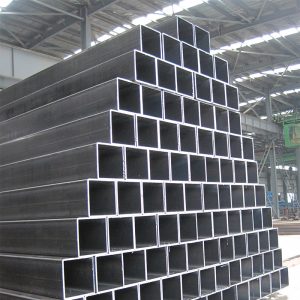How to look at steel pipe corrosion & failure in applications
In the recent years, the estimated cost for replacing corroded piping systems in applications would be considered to be a big budget annually—making corrosion one of the most potentially damaging losses to any commercial, private, or industrial property.

The corrosion of steel pipes and its related components is a continuous and virtually unstoppable process over time in applications. The end product, which is commonly referred to as rust, is simply the result of an electrochemical reaction through which the higher energy-processed metal is slowly reverted back to its naturally occurring form: metal ore. Every year, there is a large amount of money will be spent on corrosion control chemicals, coatings, and other protective systems. And even more are spent on corrosion monitoring and testing. And yet, corrosion problems are increasing in frequency and severity, not decreasing. For various reasons ranging from declining material quality and engineering to less effective corrosion controls, corrosion activity now presents to many property managers potentially career-altering challenges.
In many cases, a piping failure is often the first sign of a corrosion problem. Yet in many examples, signs of an impending pipe failure have been evident for months or years, and gone ignored. Failures can be minor (in the form of a pinhole leak) or catastrophic, with significant losses due to water damage as well as the cost of pipe replacement. As a rule, without a protective coating, steel or iron is easy to produce rust — a process known as corrosion. To prevent this, steel pipe manufacturers galvanize steel pipes in a mill by coating them with a thick layer of zinc. They either dip the pipes in a vat of the molten metal or use electroplating techniques. Before shipping the pipes, manufacturers often coat the galvanized metal with oil to retard reaction of zinc with the atmosphere. When this oil coating wears off, the reaction of zinc with oxygen produces a fine whitish film that changes the color of the metal from gray to an even less appealing whitish-gray. When galvanized pipe needs importing, this type of pipe usually has a passivator film that protects the metal from corrosion in the salt-water environment as the metal travels across seas or oceans on cargo ships. When exposed to the exterior, this passivator will weather away in six months; for interior use, it can be removed by etching the surface with a phosphoric acid solution.
Hot dipped galvanized steel pipe has been considered popular a lot among many users today. For one thing, the galvanization process protects the steel from rusting damage that can occur during transportation, installation and service. The zinc layer on the surface of pipe can form a barrier protection for steel products to extend the service life in applications. For the other thing, this layer is also resistant to wear and scratch, which makes the steel look more attractive. Furthermore, with the layer of protection, pipes can be used in outdoor areas, and can withstand the harm from some of the environmental effects. Galvanized steel pipe is used in many outdoor applications such as fencing, fence posts and water-supply pipes.
Today, various types of steel pipes have been widely used for structural steel pipes in construction applications. Therefore, a regular maintenance for steel pipes seems very important action in applications. Pipe repairs take on various forms, ranging from temporary clamps to the replacement of entire piping systems. In many examples, the denial of a corrosion problem results in multiple or staged repairs over years, wasting valuable time that could have otherwise been used to correct the problem and minimize far greater corrosion damage.
Tel: +86 18202256900 Email: steel@tjdpbd.com









